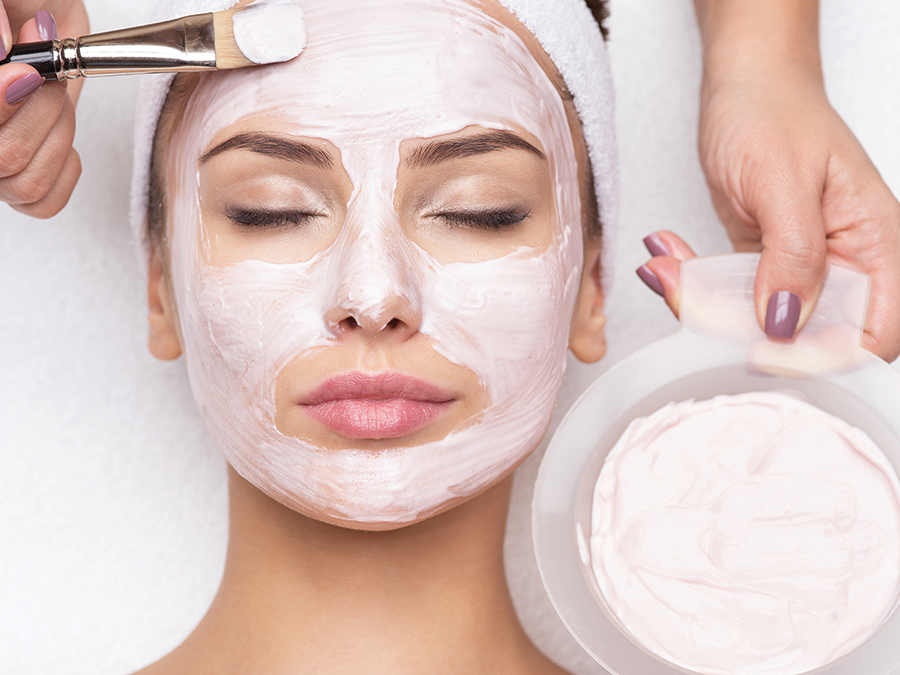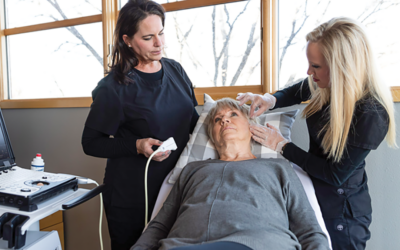Skincare secrets for surviving (a COVID) winter
The new year is all about setting intentions, whether that be to focus on our careers, to be more present with our loved ones or to take better care of ourselves. Who knows, maybe this’ll be the year you’ll start a business or run a marathon—anything is possible in 2021.
Many of us are prioritizing self-care in this season of change, but there’s more to think about than eating healthy, exercising and getting a good night’s rest. If you pay close attention, you may find that your dry, itchy or acne-prone (along with the presence of recently-dubbed “maskne”) skin could use a little extra TLC, too.
So, what should we be doing to protect our skin during the frigid winters we know and love here in Northern Colorado? Licensed esthetician and co-owner of Harmony Skin and Wellness Clinic, Kendra Thompson, gathered up her team of skincare experts and curated a cold-weather regimen to help keep our skin happy and healthy all winter long.
Identify your skin type
The first step toward creating a tried-and-true skincare routine for all seasons is to identify your skin type—normal, oily, dry, combination or sensitive—and if you’re not sure what yours is, there are plenty of online quizzes to help you figure it out. Once you’ve pinpointed your skin type (and how it’s amplified in the winter or under a mask), you can begin formulating a morning and nighttime routine catered to your specific needs.
No matter what skin type you have, the estheticians at Harmony Skin & Wellness recommend starting your day with a classic morning routine consisting of a cleanser, toner, moisturizer and sunblock (yes, even in the winter), then following it up at night with anti-aging creams made of peptides and retinoids. To be proactive as the skin matures, Thompson suggests adding a high-quality serum such as Epionce Intense Defense Serum and a soothing eye cream like DermEssence (from Harmony’s own line of skin care).
“Using the right product for your skin type and condition really is crucial,” says Thompson. “For example, some cleansers have too much salicylic or glycolic acid, which can over dry already dry skin but be just right for acneic or combination skin. We recommend a salicylic- and glycolic-based cleanser…for oily or acne-prone skin, a gentler cleanser…for people with combination skin and an emollient cleanser…for people with dry skin.”
Exfoliate, moisturize, repeat
Now that you’ve established a consistent skincare routine, Thompson recommends doubling down on exfoliation during the winter: “Between the frigid air outside and dry indoor heating, our skin cells dehydrate and die faster in the winter, so we need to exfoliate to encourage cellular turnover.”
Thompson suggests exfoliating your body and face two to three times per week, as this helps to replenish the skin by buffing off dead and dehydrated skin cells that can sit on the surface of our skin and clog our pores. “Just don’t use hot water on your face,” she cautions, “because this can overly dry out the skin, and if it’s extremely hot it can lead to broken and dilated blood vessels.”
When it comes to exfoliating, less is more. In fact, you can actually deplete your skin and strip it of moisture if you exfoliate too often. Choose your exfoliator wisely. Ideally, says Thompson, it’ll be something coarse enough to buff away the dead skin cells, but beware: sometimes trendy skincare products like walnut scrubs and apricot scrubs can be too coarse and damage your skin.
You’ll likely notice that your skin feels tighter after you exfoliate, and that’s where a good moisturizer comes in. “The right moisturizer will feel hydrating like a drink of water for your skin, making it look plumper and more luminous without feeling oily,” Thompson explains. “Our favorite moisturizers contain restorative ingredients like peptides, growth factors and antioxidants along with mega-hydrating ingredients like hyaluronic acid.”

Treat(ment) yourself
Of course, there are also plenty of skincare treatments that can help you combat dry, winter skin and give your daily routine an extra boost. For deeper exfoliation, Thompson says winter is the perfect time to try chemical peels, microdermabrasion and facial lasers: “Nothing will change the skin more than an ablative laser for skin resurfacing, and facial laser treatments are some of the most effective cosmetic procedures for improving aging skin. These popular cosmetic procedures remove the outer layers of aged or sun-damaged skin, promoting collagen stimulation and an overall rejuvenation of your skin.”
Even an occasional facial can do wonders for your skin in the winter, providing essential moisture and nourishment during a time when our skin is facing the cold, wind, UV rays and dry air all at once. Thompson recommends facials like their HydraFacial, which “infuses serums directly into your skin to deeply hydrate for weeks afterward. This treatment is one of our most popular because everyone walks away with a glow.”
Don’t forget sunscreen
Even though the days are shorter and many of us are spending less time outside, Thompson says sunscreen is still critical in the winter. “We highly recommend wearing sunscreen every day and reapplying it every few hours. Choose a high-quality sunscreen that behaves like a concealer or a final moisturizer—sunscreens have come such a long way, and a high-quality sunscreen won’t look or feel greasy.”
Harmony Skin & Wellness staff favorites include EltaMD, Revision Intellishade, Epionce and Colorescience sunscreens. According to Thompson, mineral sunscreens can also be luminous and work well for most skin types, so don’t be afraid to try different products until you find “the one.” Once you do, she says to marry it and have it with you every day, even in the winter. Just be sure that you are using an SPF 30 or higher for maximum effectiveness.
About the maskne
We’ve all had it at some point or another, and if you’ve never been prone to breakouts, maskne can be particularly annoying. According to Thompson, the best thing to do is treat maskne before it gets out of hand.
“If you’re noticing an increase in blemishes under your mask, seek treatments that can dry the sebaceous glands and kill the bacteria buildup on your skin. HydraFacials, chemical peels, Thermo-Lo and laser procedures are a few examples of treatments that can be effective at reducing maskne,” she explains.
If you’re one of the lucky few who has yet to experience mask breakouts, don’t let your guard down just yet. Preventing maskne starts with always wearing a clean mask and making sure the skin underneath is clean at all times. Thompson suggests wiping the skin under your mask with a high-quality toner a few times a day, and if you find you are starting to break out, switch to a high-quality glycolic acid and salicylic acid-based cleanser and make sure to wash your face two times per day.
And if that doesn’t do the trick, you can also use products that target blemishes (i.e. tea tree oil, benzoyl peroxide or salicylic acid) as spot treatments two to three times per day until the breakout starts to clear up. A favorite of Thompson’s? Try the spot treatment stick called BlemErase that can go in your bag and can be used anywhere, allowing for discreet application on the go.
“If you’re experiencing breakouts under your mask, be kind to yourself and remember that many people who have never had skin problems are dealing with maskne,” Thompson says. “We’re all in this together!”
Laurel Thompson is a Fort Collins native and CSU alum. When she isn’t writing for local lifestyle publications, you’ll find her soaking up the sun, cooking something delicious, or reading a good book while sipping an iced coffee. To comment on this article, email letters@nocostyle.com.







